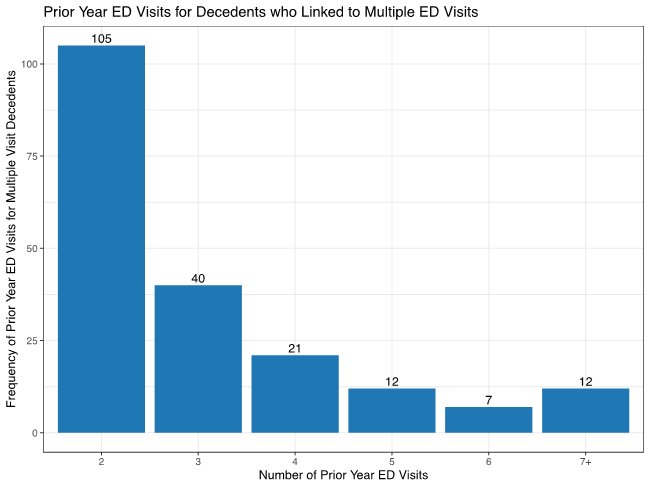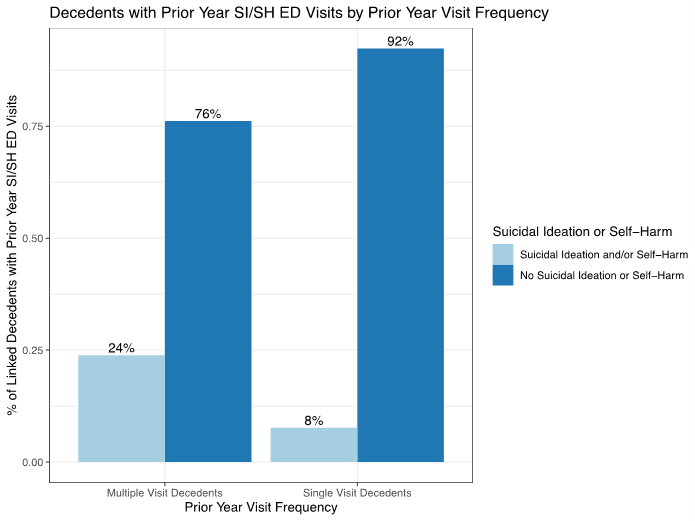In 2020, more than 45,000 people in the United States sustained fatal firearm-injuries, accounting for 53% of suicides and 49% of homicides (CDC). More people suffer nonfatal firearm-related injuries than die, and these injuries often result in long-term health consequences (CDC).
Firearms are the leading method of violent death in North Carolina (NC). In 2020, 68% of violent deaths (n=1,651) in NC involved a firearm, accounting for 61% of suicides and 83% of homicides. In 2021, there were 4,561 firearm injury emergency department (ED) visits in NC, for a crude rate of 43.0 firearm injury ED visits per 100,000 NC residents.
In 2020, the CDC launched the Firearm Injury Surveillance Through Emergency Rooms (FASTER) program to address gaps in timely data availability for nonfatal firearm injuries through the use of syndromic surveillance ED visit data; North Carolina was one of 10 states to receive funding for this initiative.
We can gain valuable insight into who is most at risk for fatal firearm injury by linking violent death data to ED visit data. In this post, we are highlighting key results of an NC-FASTER study that aimed to link NC Violent Death Reporting System (NC-VDRS) data for firearm deaths in NC from 1/1/2019–12/31/2020 to ED visits in NC DETECT in the year prior to death. We linked these two datasets without using any patient identifiers, instead relying on common variables such as date of birth, sex, county of residence, and mechanism of injury.
We investigated individuals with two or more ED visits in the year prior to their fatal firearm injury. Examining ED visits prior to the ED visit most closely preceding death can strengthen our understanding of high-risk populations, ultimately informing prevention and intervention efforts. Note that this study investigated ALL linked ED visits in the year prior to firearm death, most of which were not firearm-related.

Overall, 28% (n=876) of firearm-related NC-VDRS deaths linked to 1,312 ED visits occurring in the year prior to the date of death. Of these records, 22% (n=197) linked to two or more prior year ED visits to the same ED facility – we’ll call these individuals “multiple visit decedents”. Multiple visit decedents ranged from 2-19 visits. The majority (53%, n=105) of decedents with multiple visits only had two ED visits, and over 90% (n=178) had 2-5 visits.

When stratified by frequency of prior year visits, linked ED visits related to self-harm or suicidal ideation were more common among multiple visit decedents (24%) than single visit decedents (8%).
Firearm injury deaths in NC-VDRS with two or more ED visits in the year prior to death provide us with unique insights into care-seeking behaviors prior to suicide and homicide, as well as potential points of intervention for outreach and care for high-risk populations. EDs may be a critical setting for screening suicide and homicide risk. Investigating this population can inform fatal firearm injury prevention efforts in EDs across the state.
If you find this information interesting, we recommend reviewing the full study report and additional NC-FASTER data reports.
